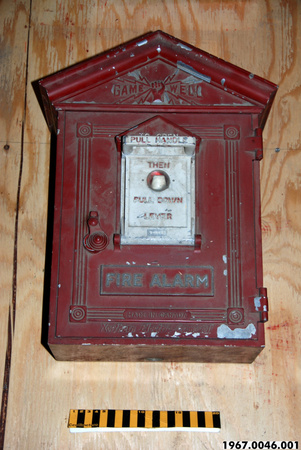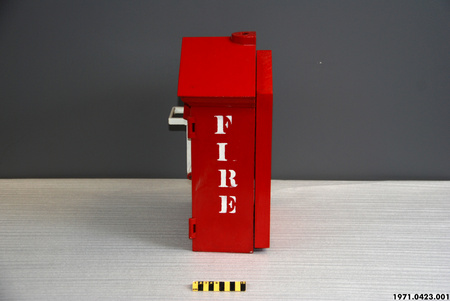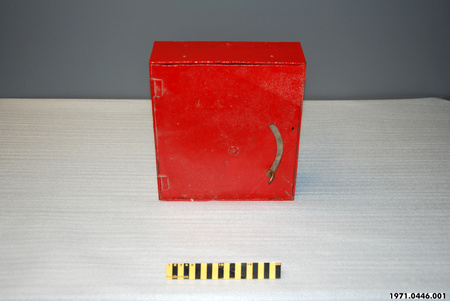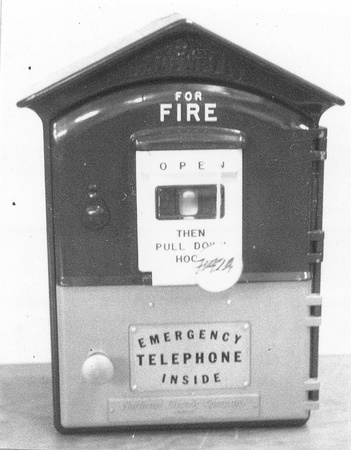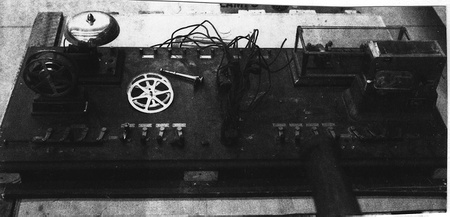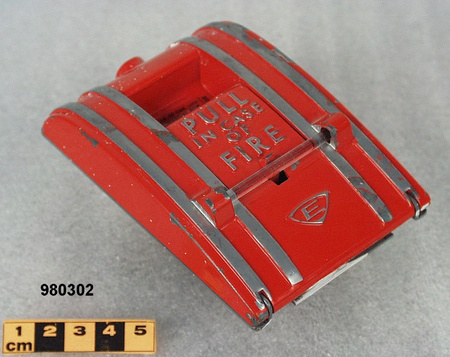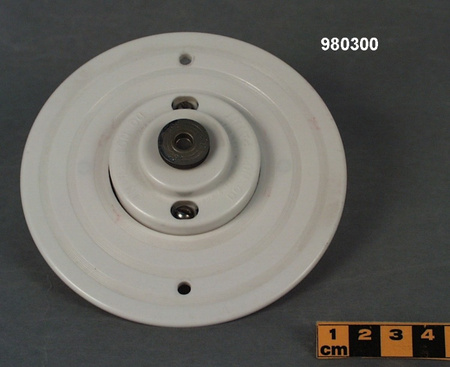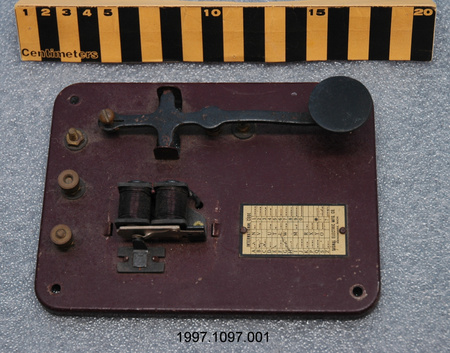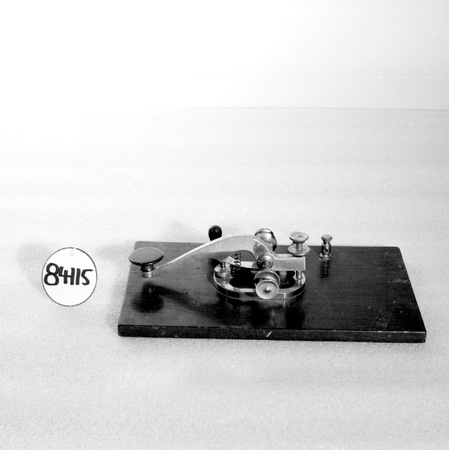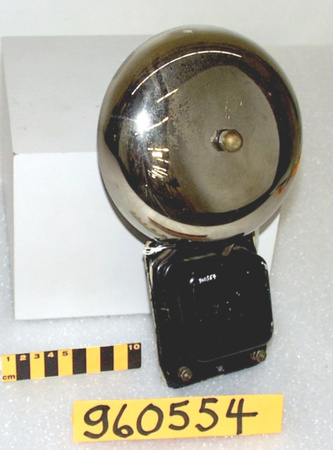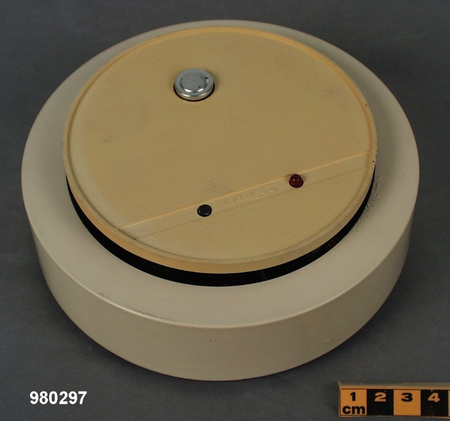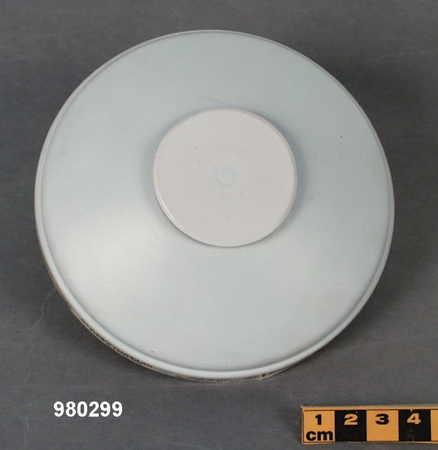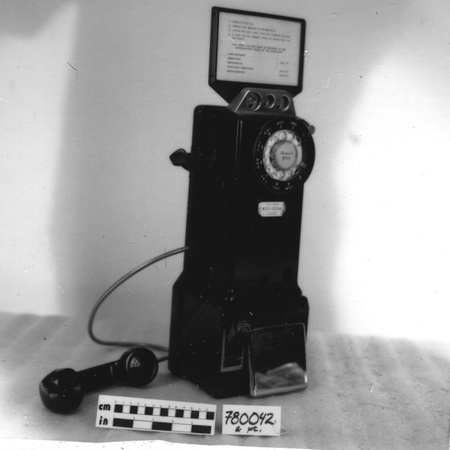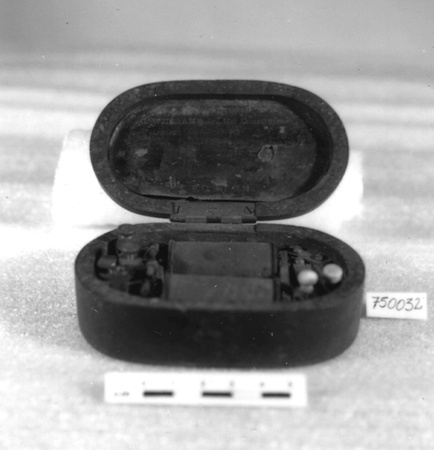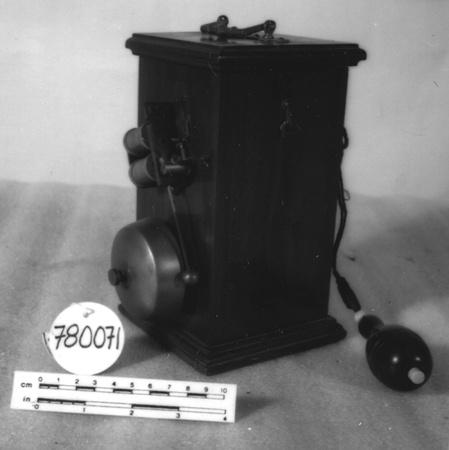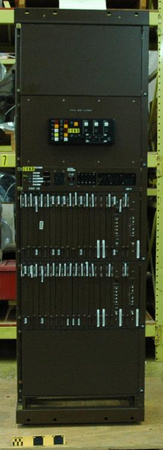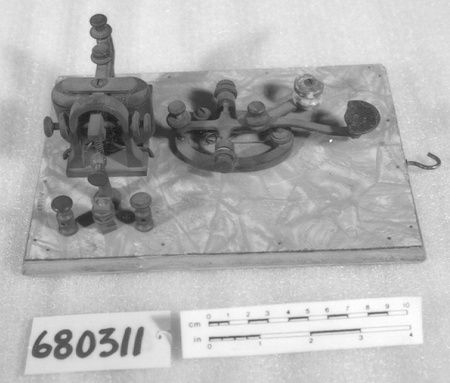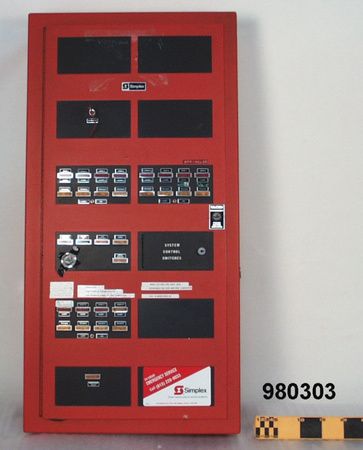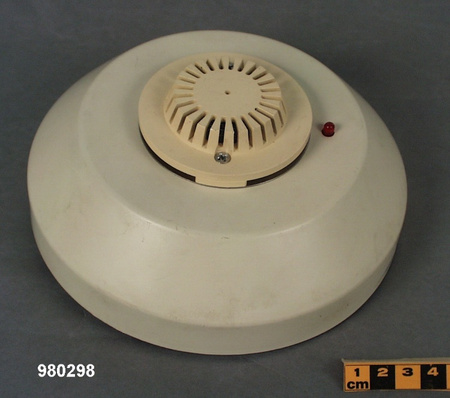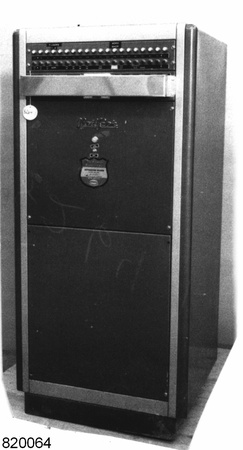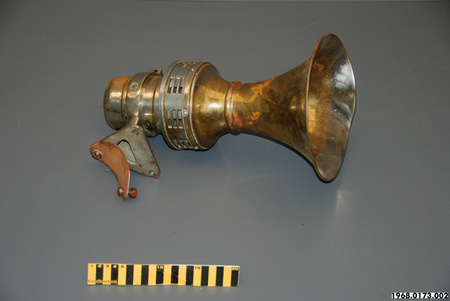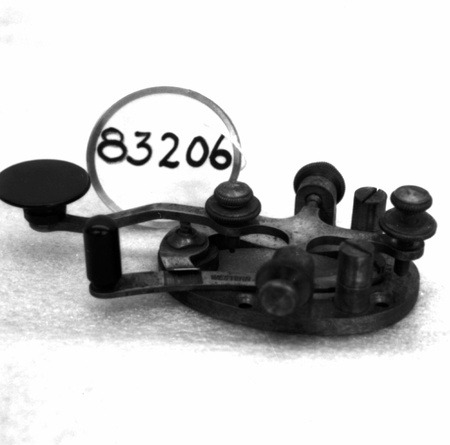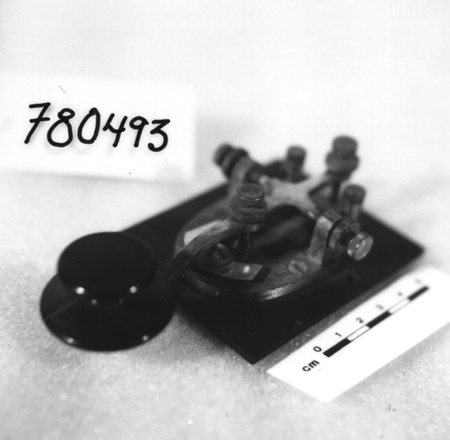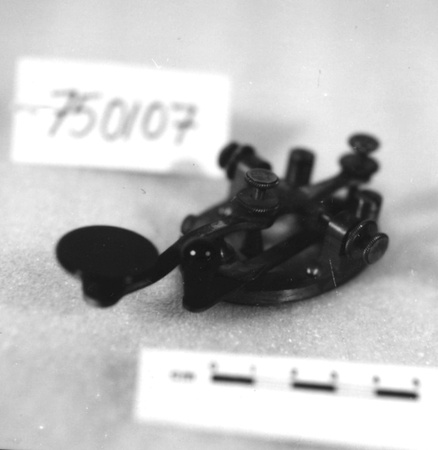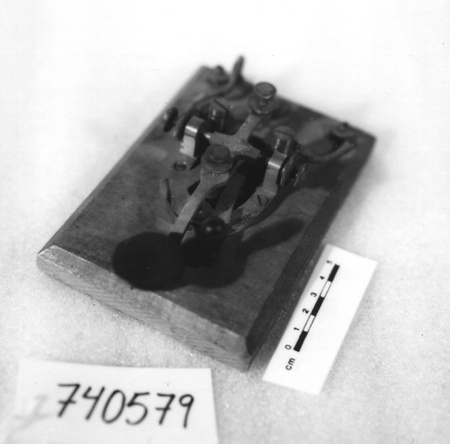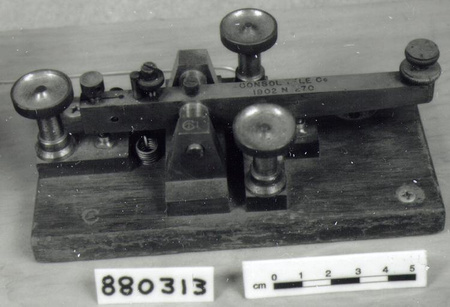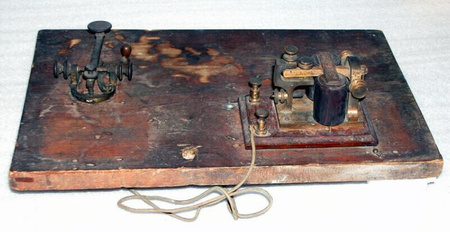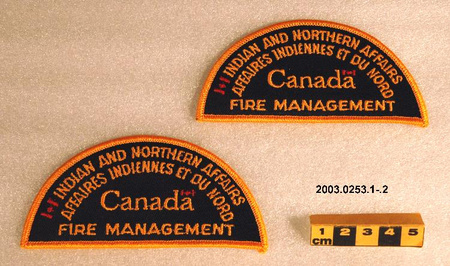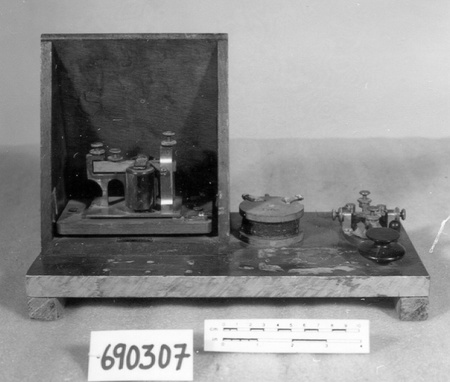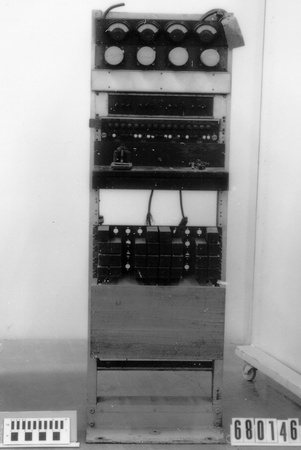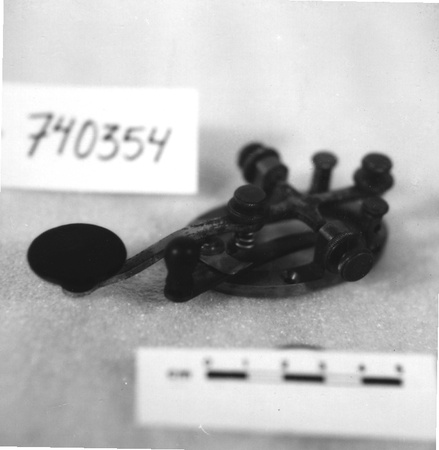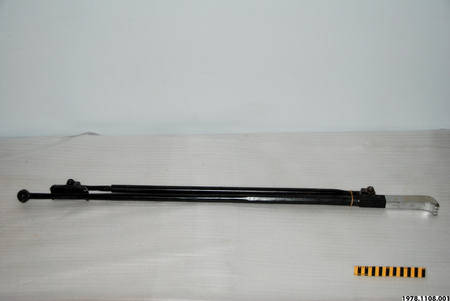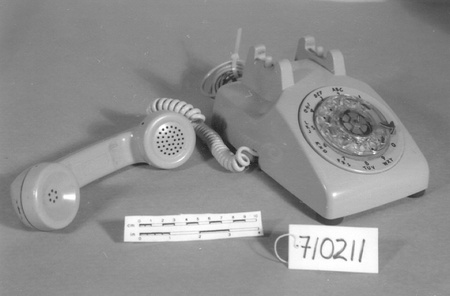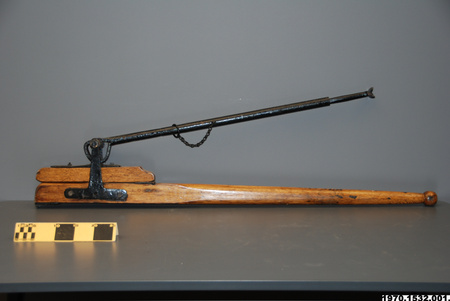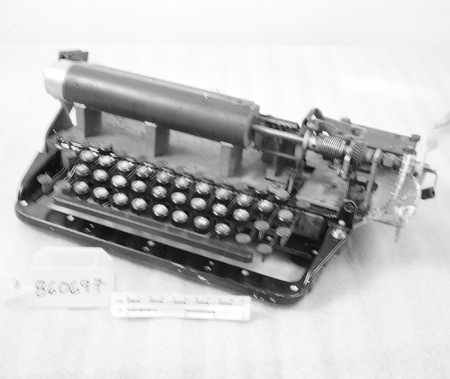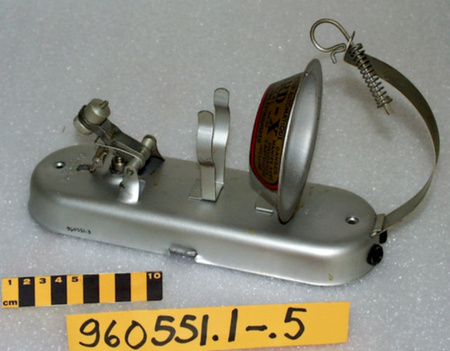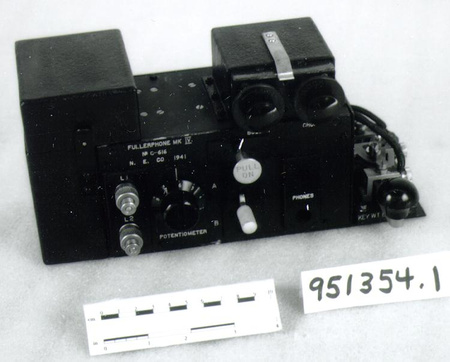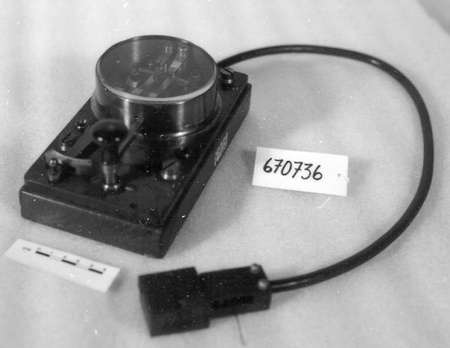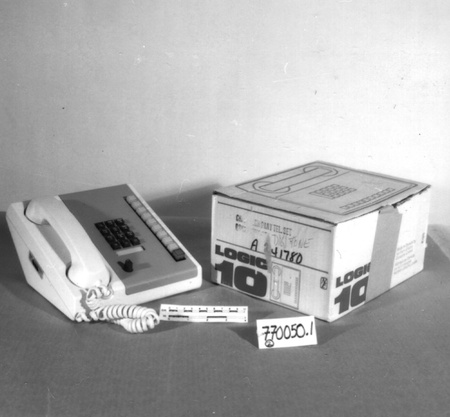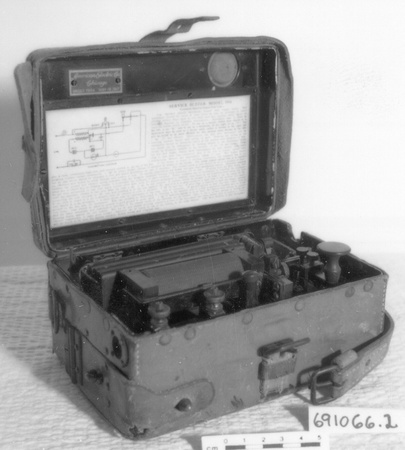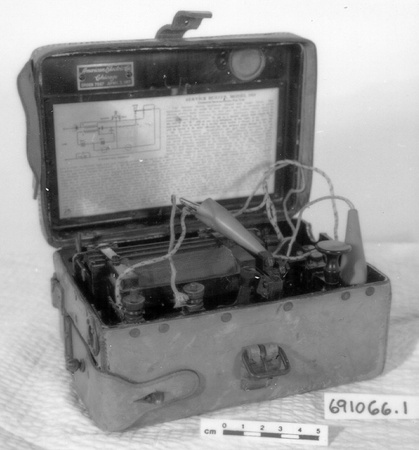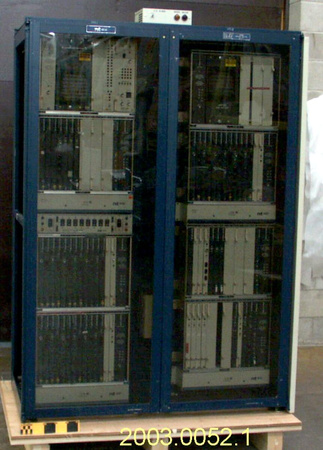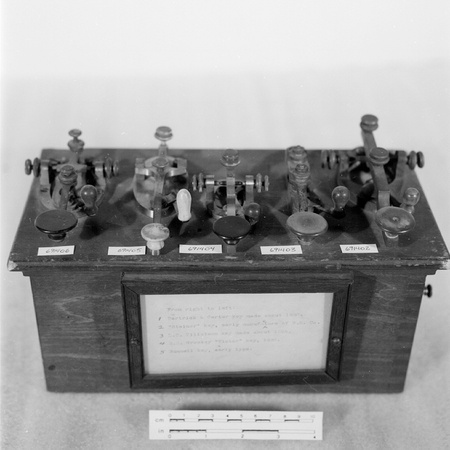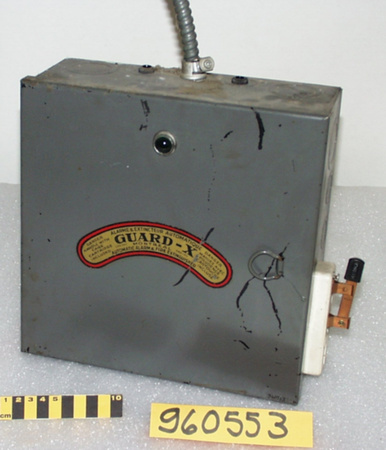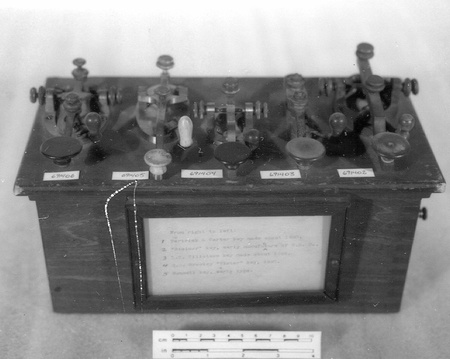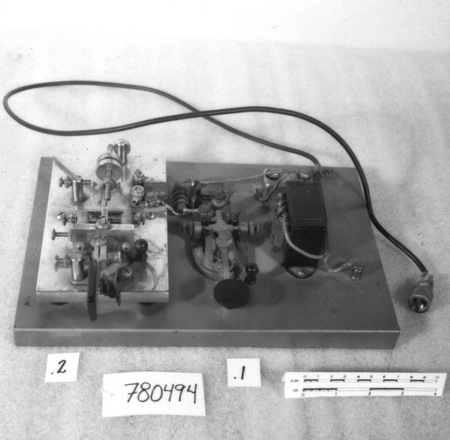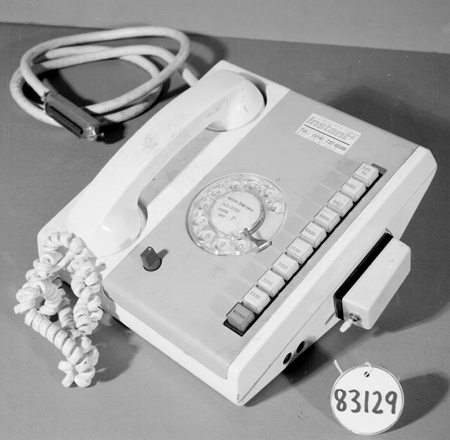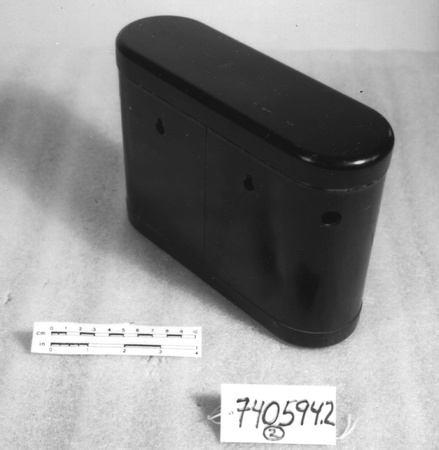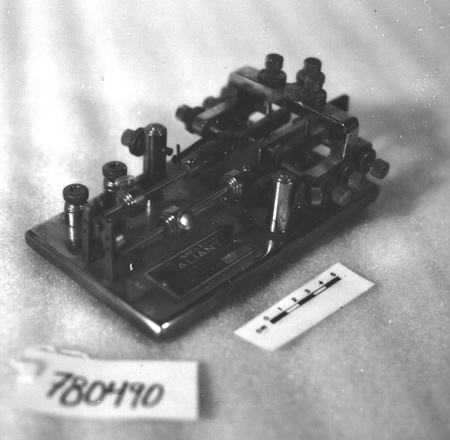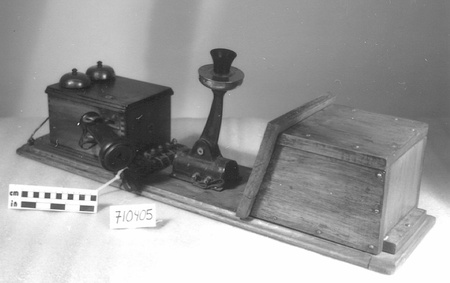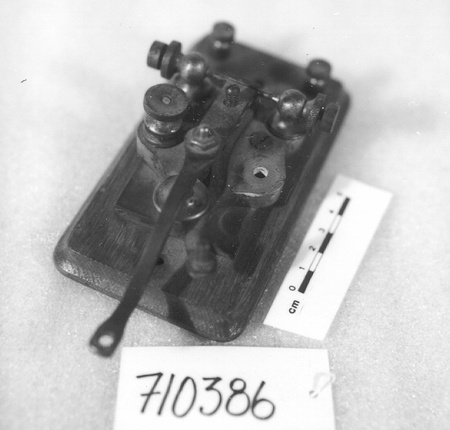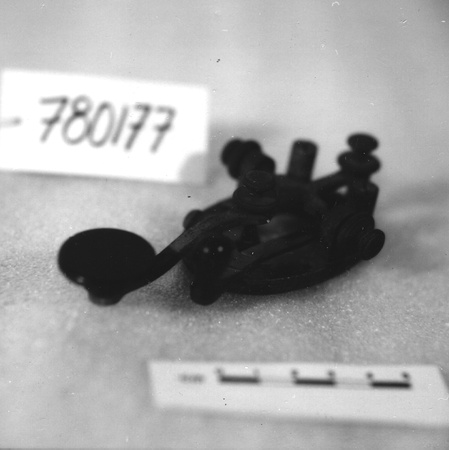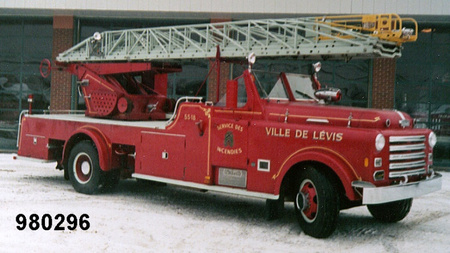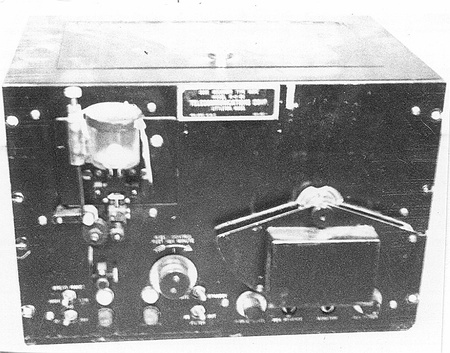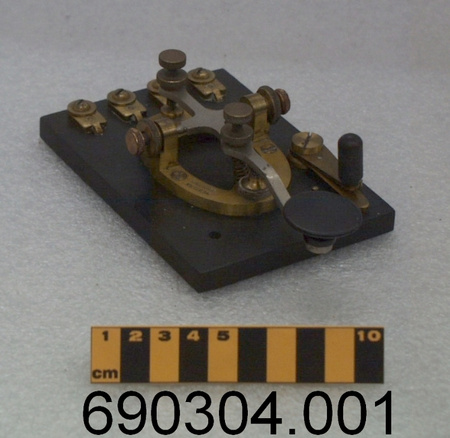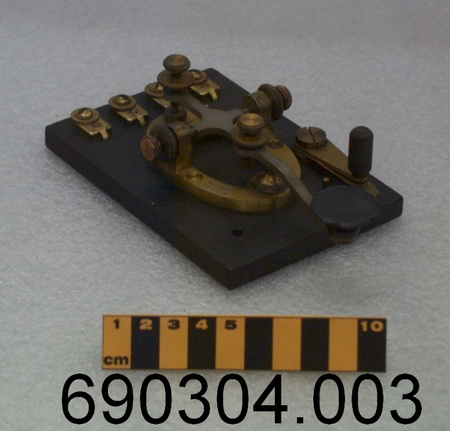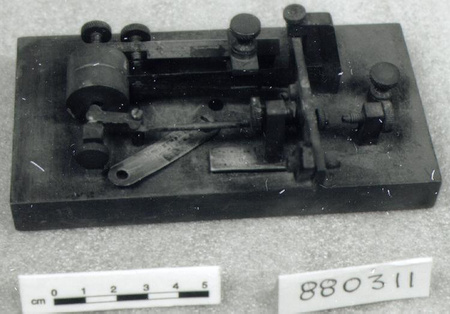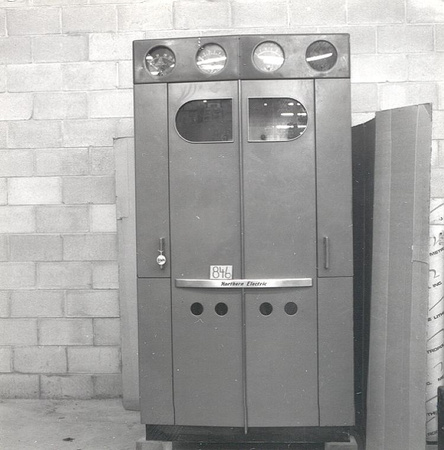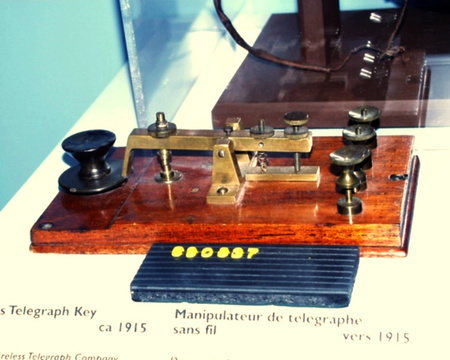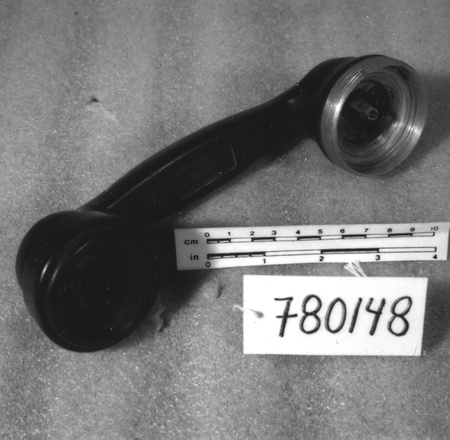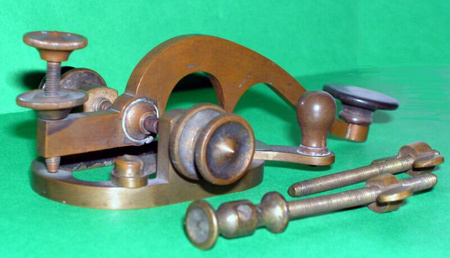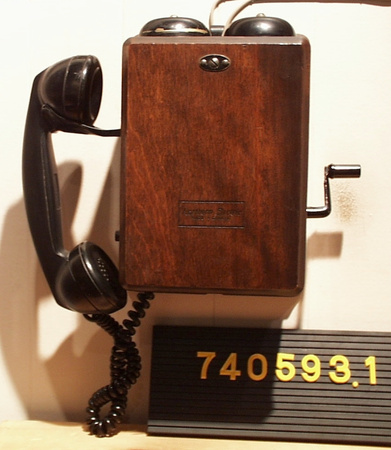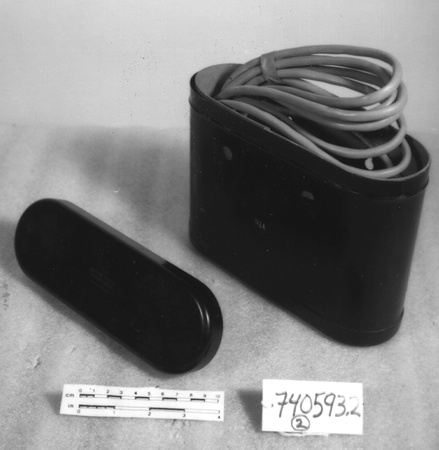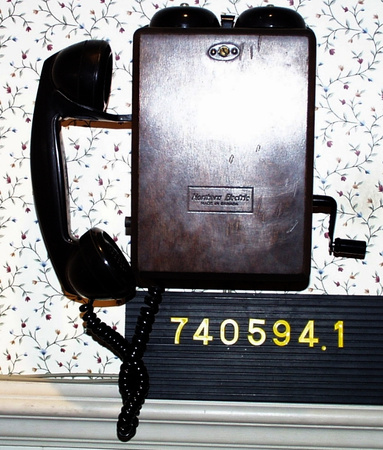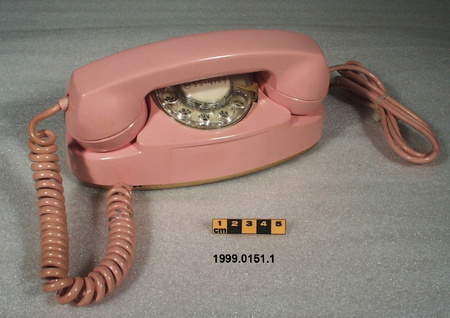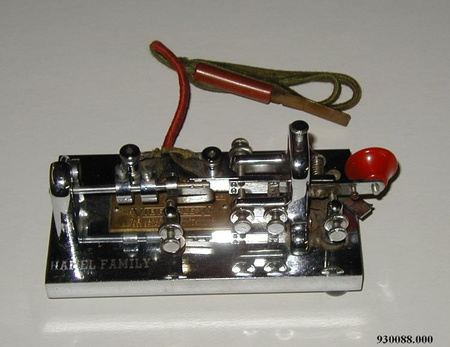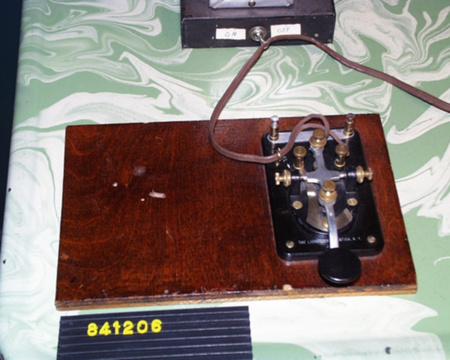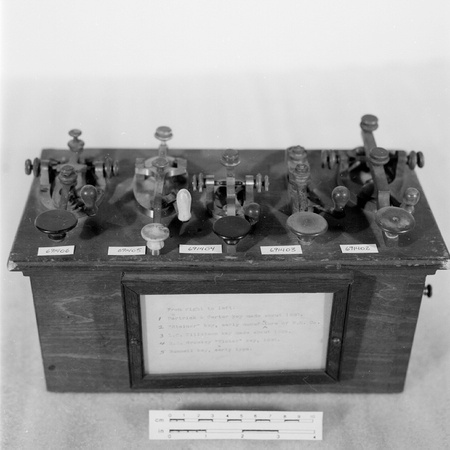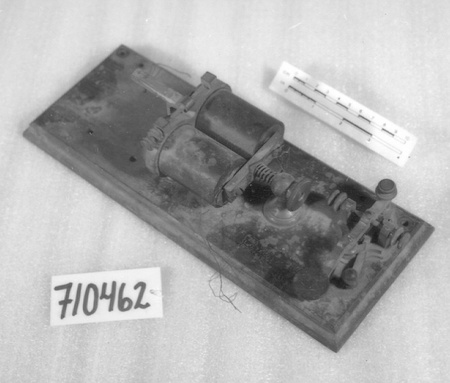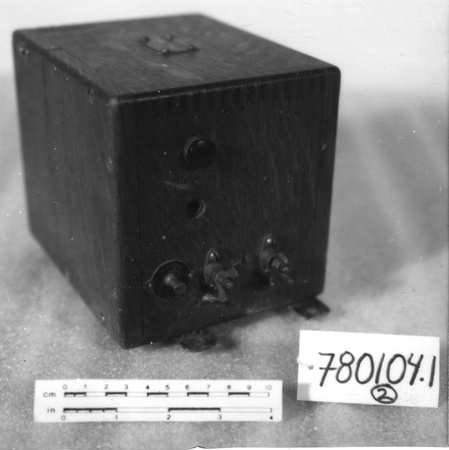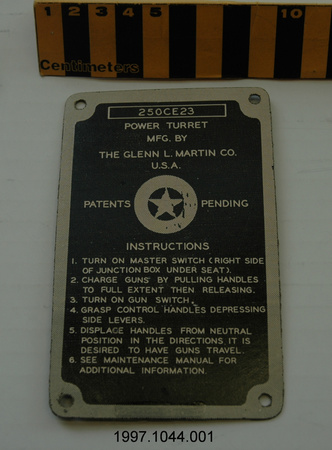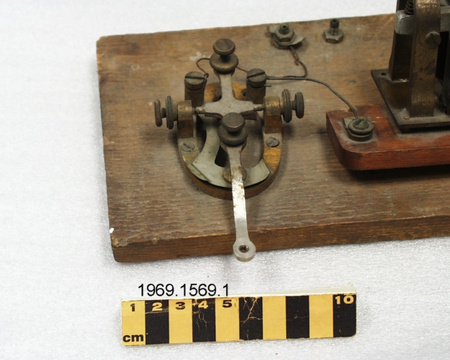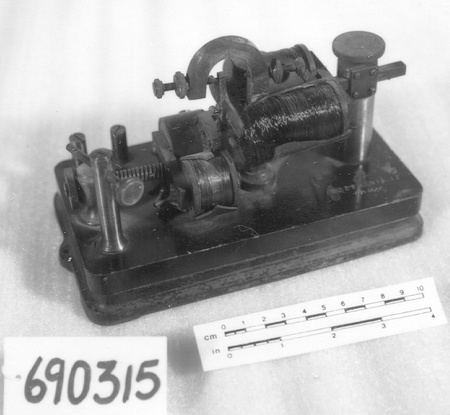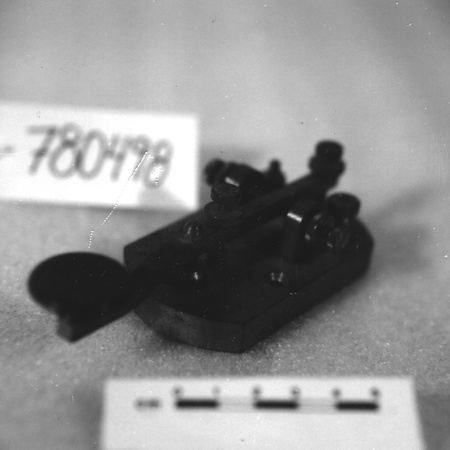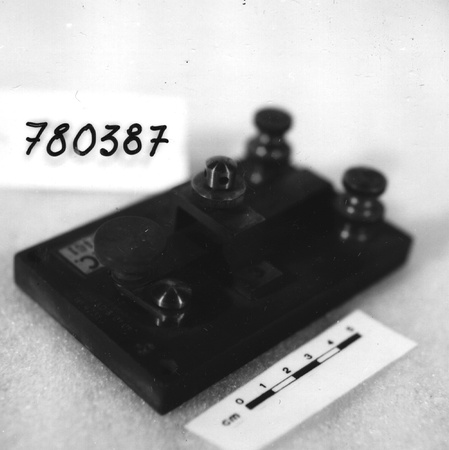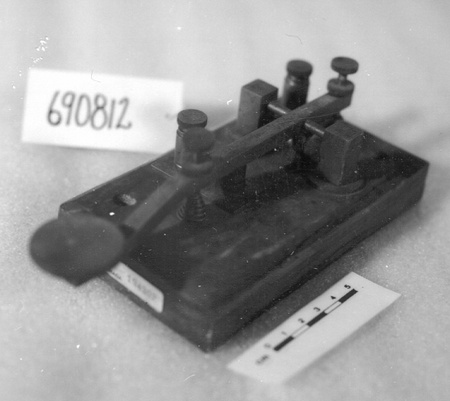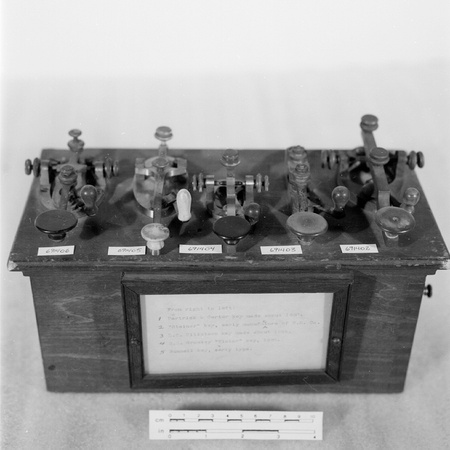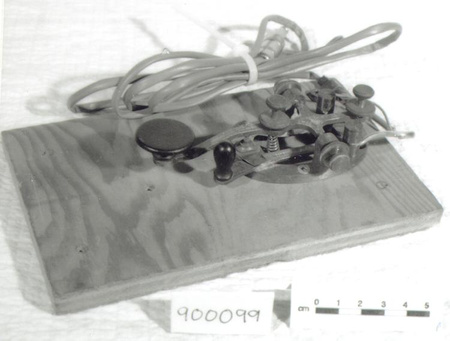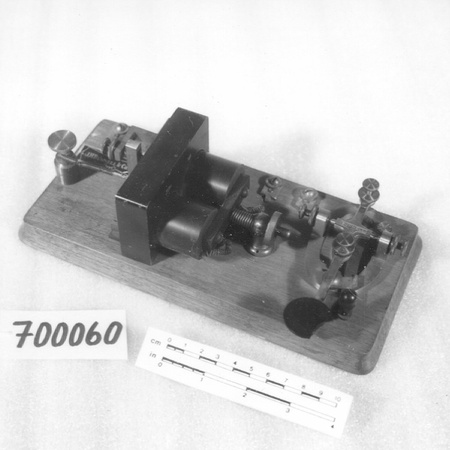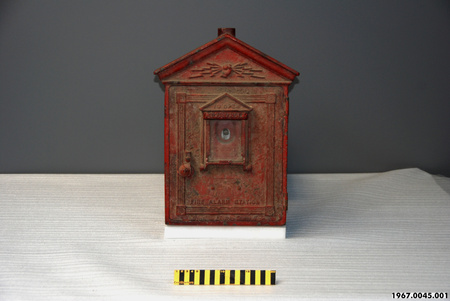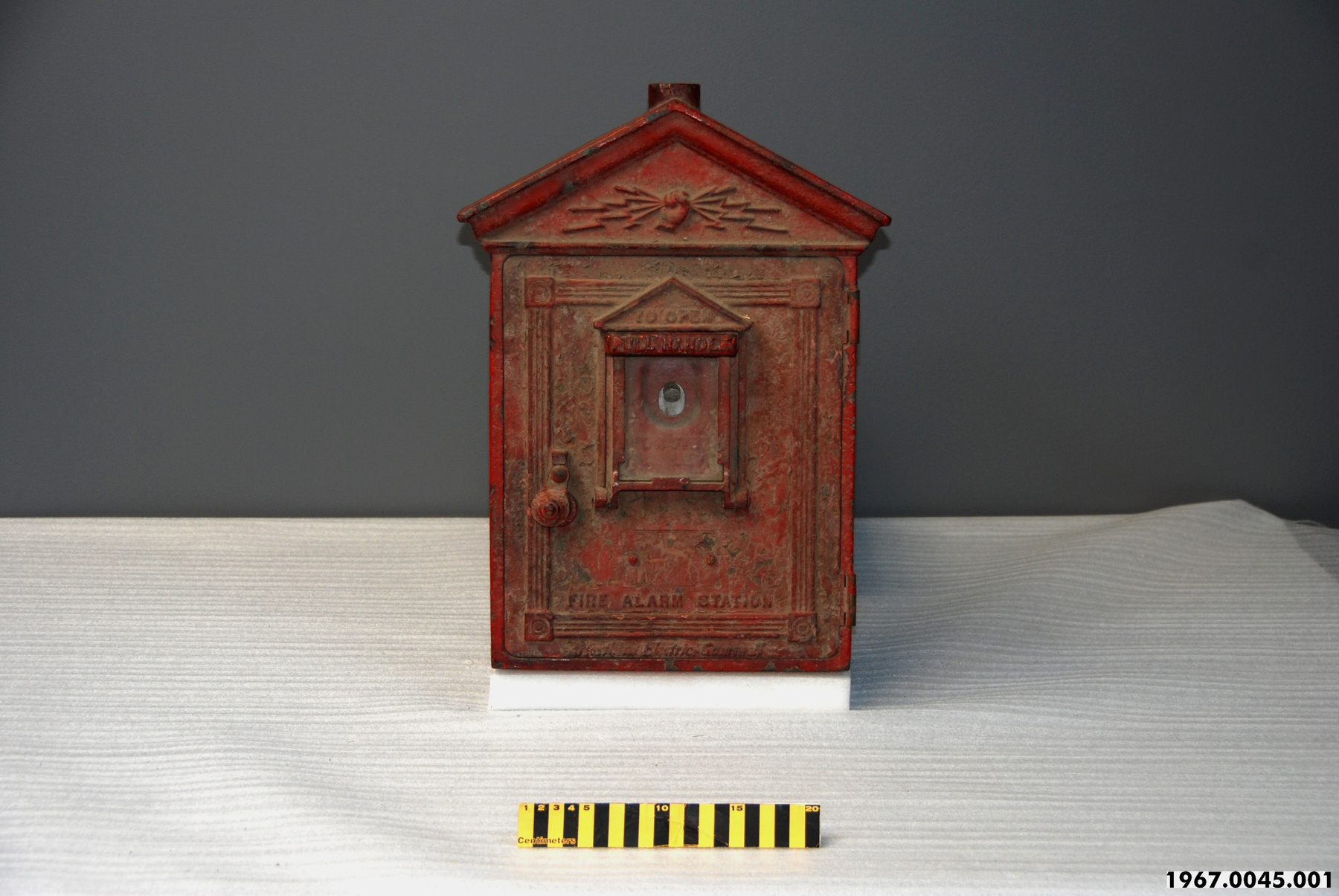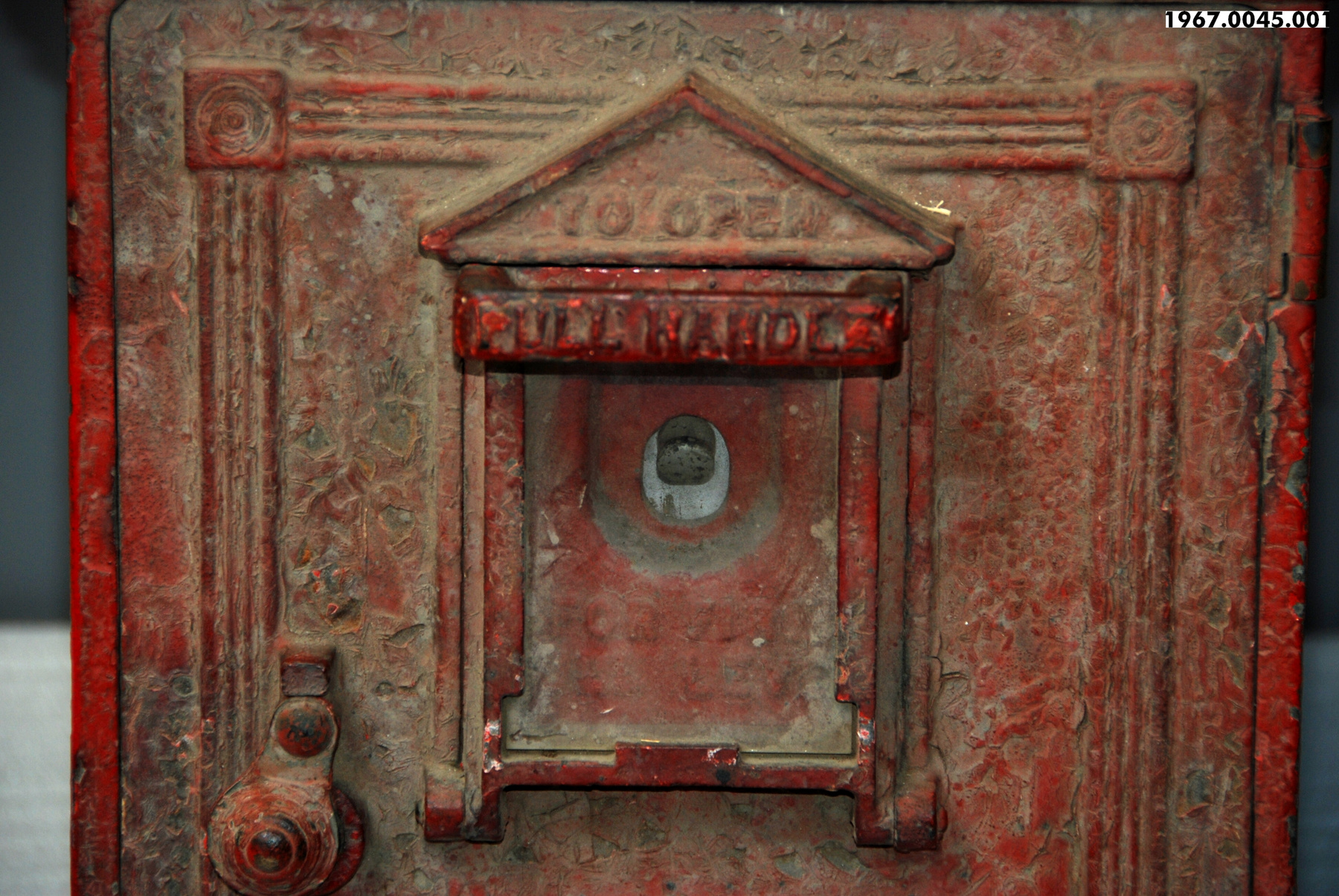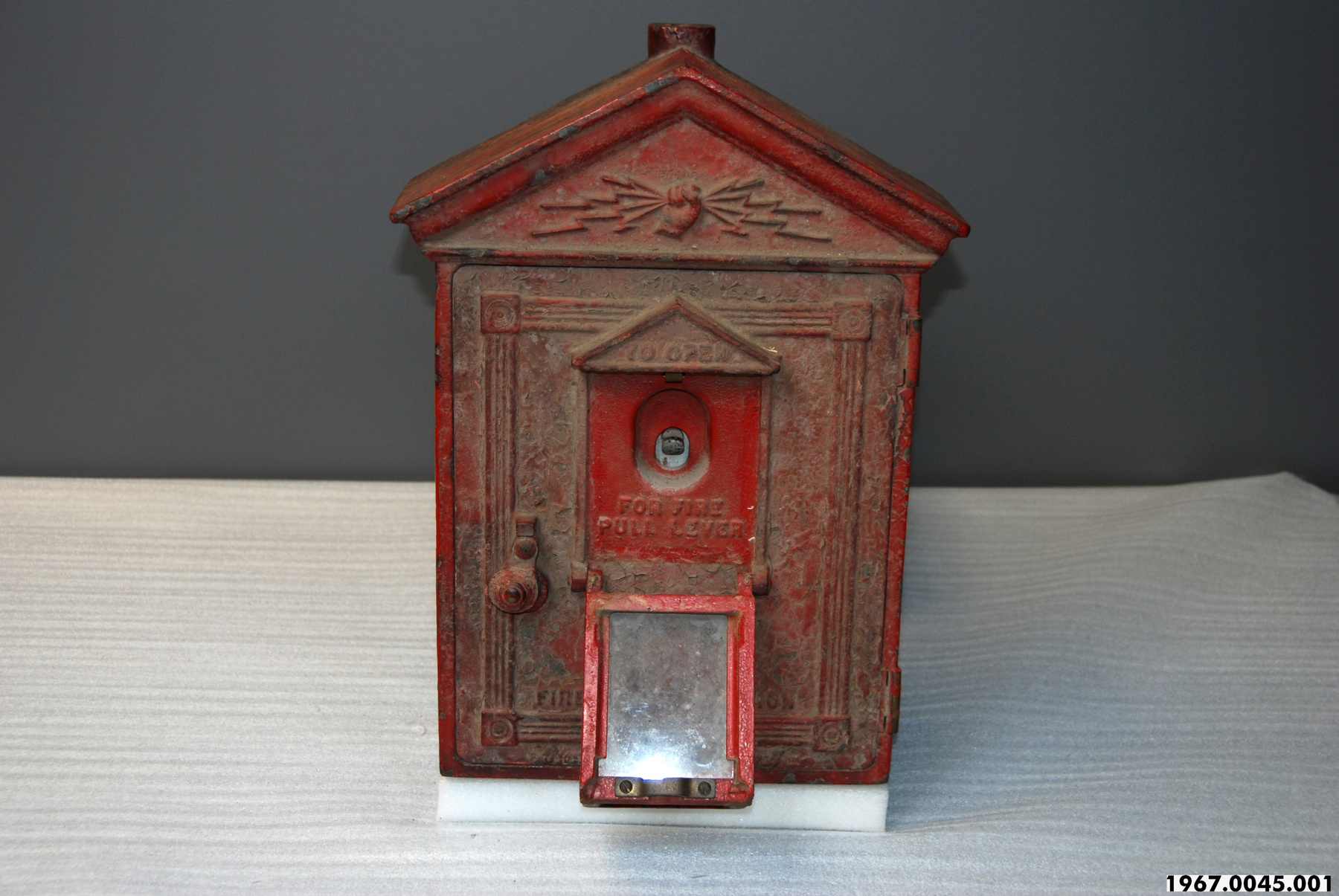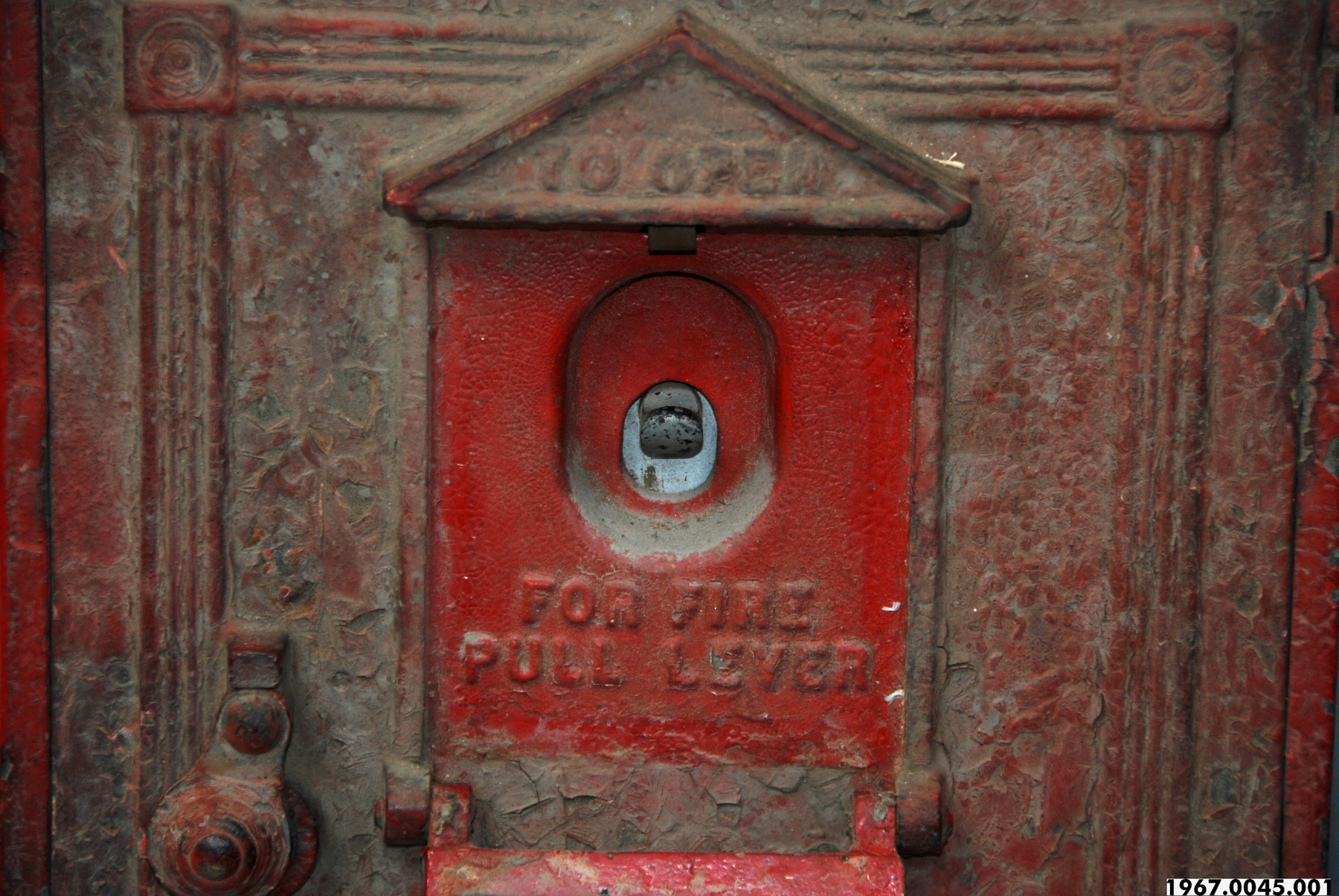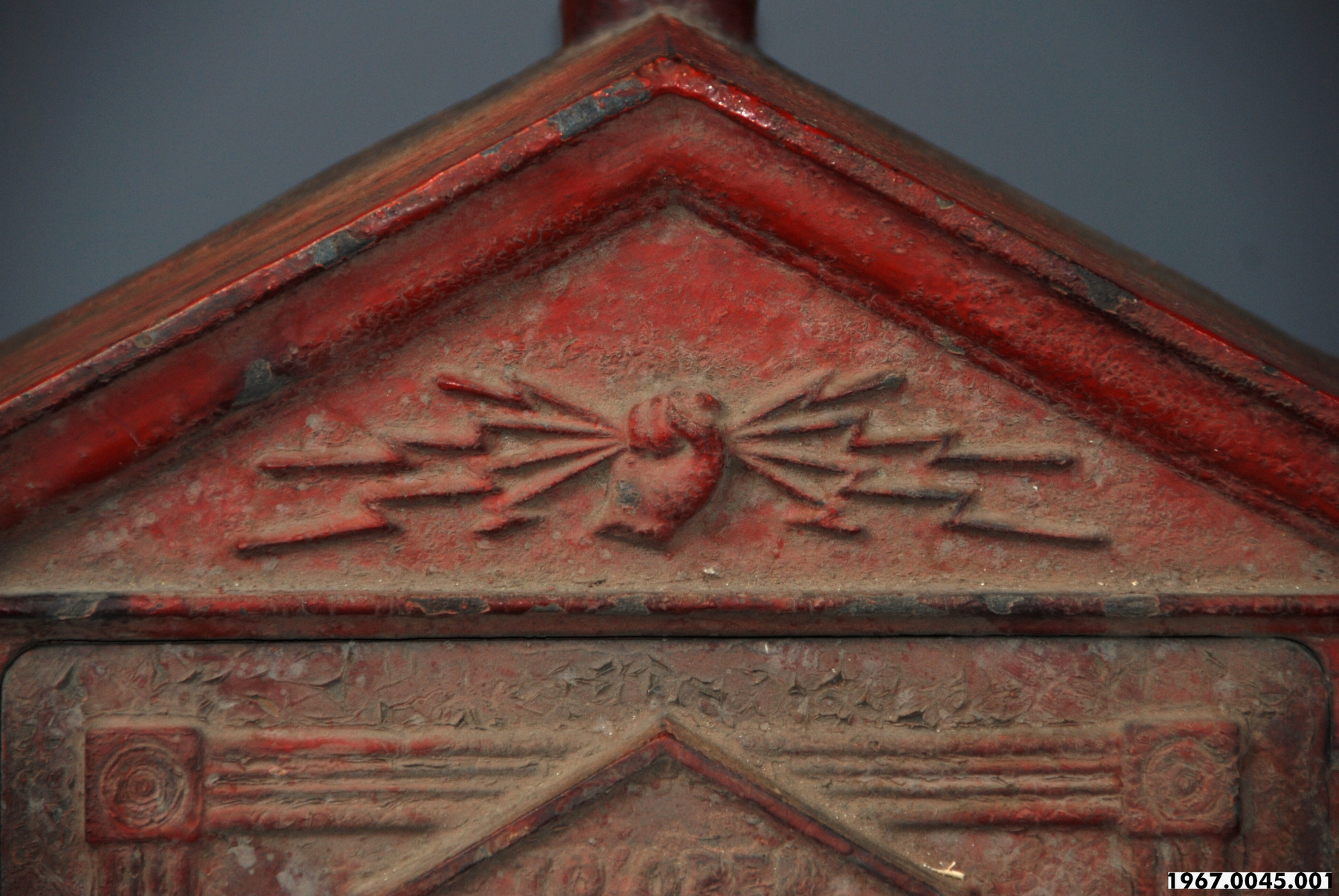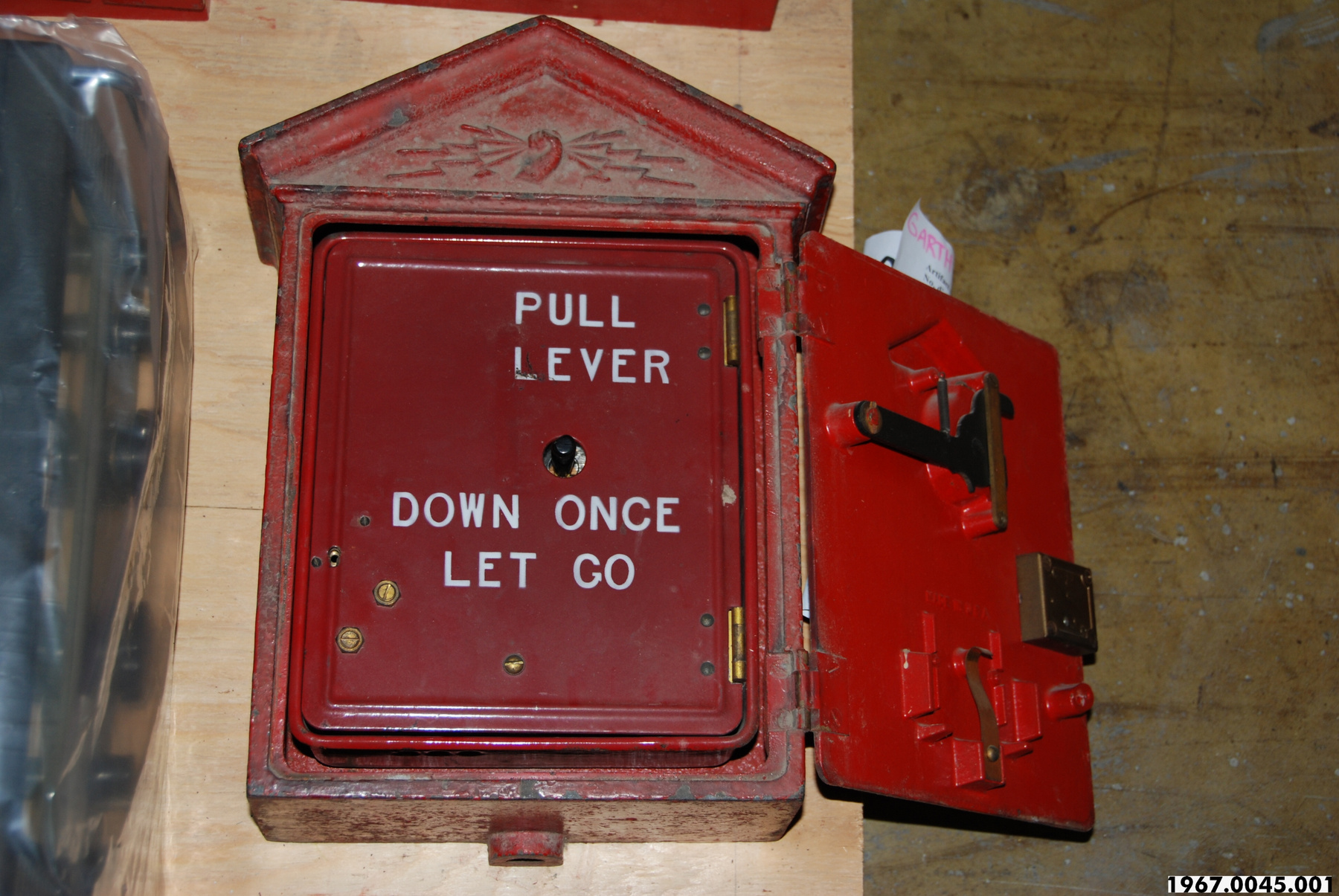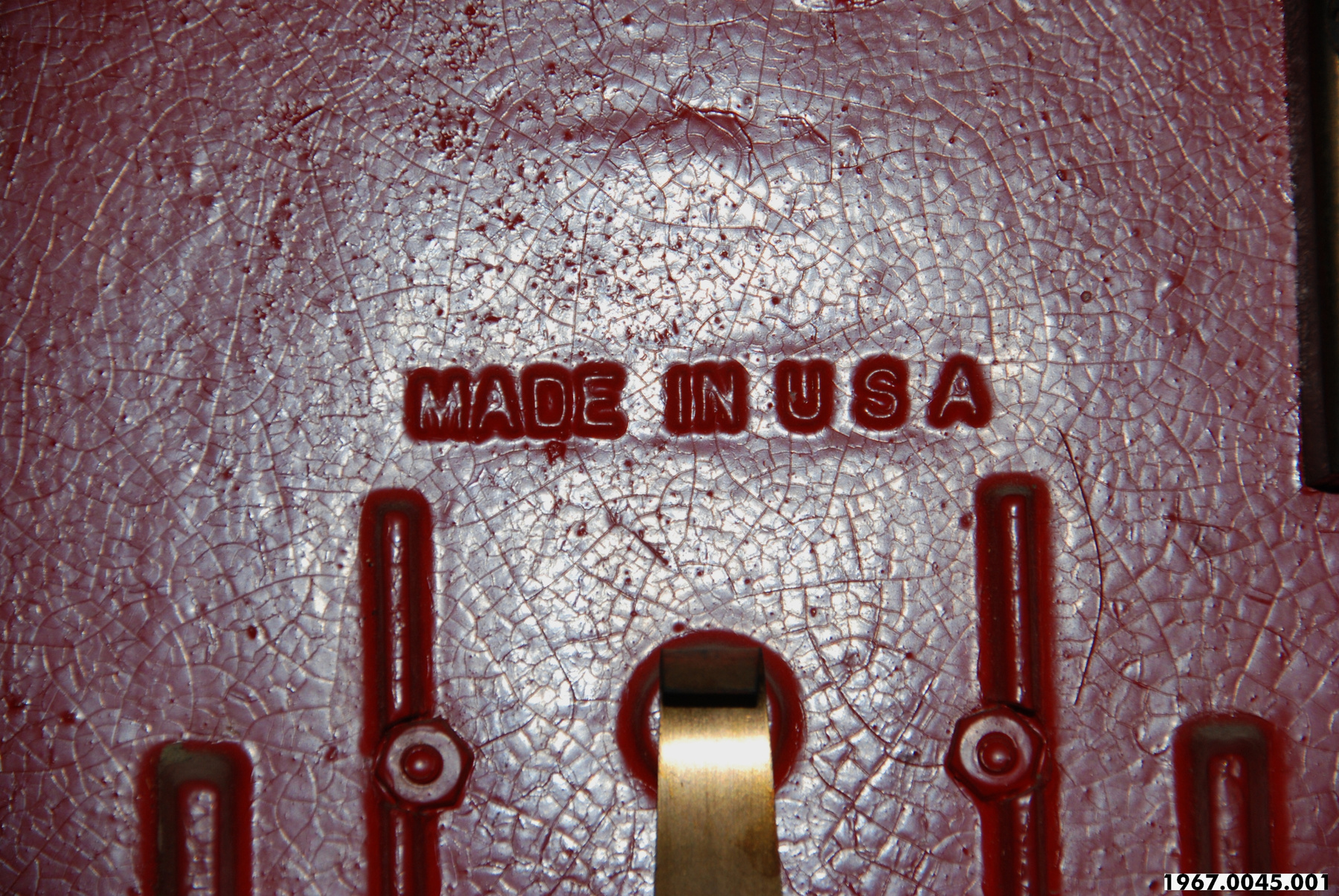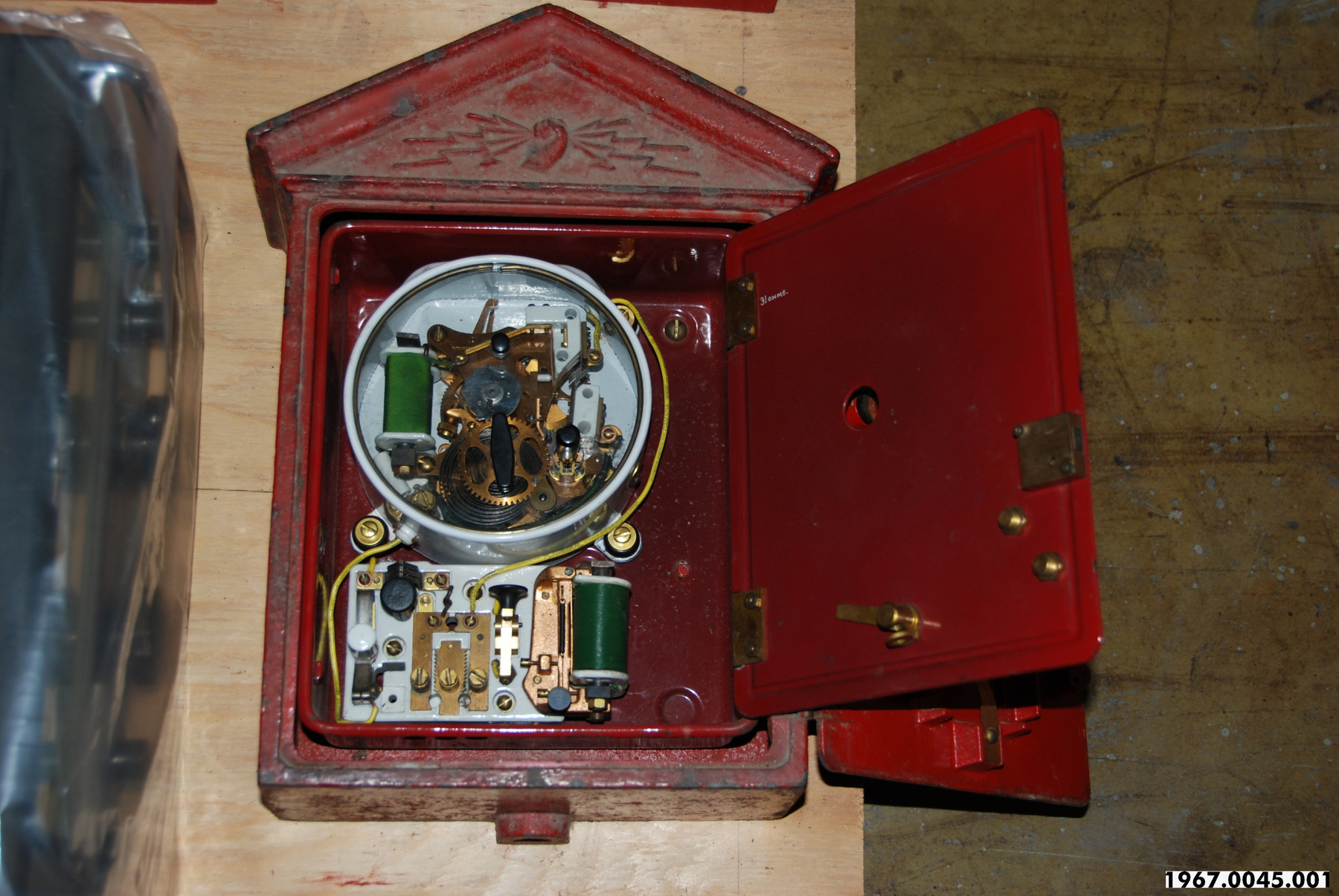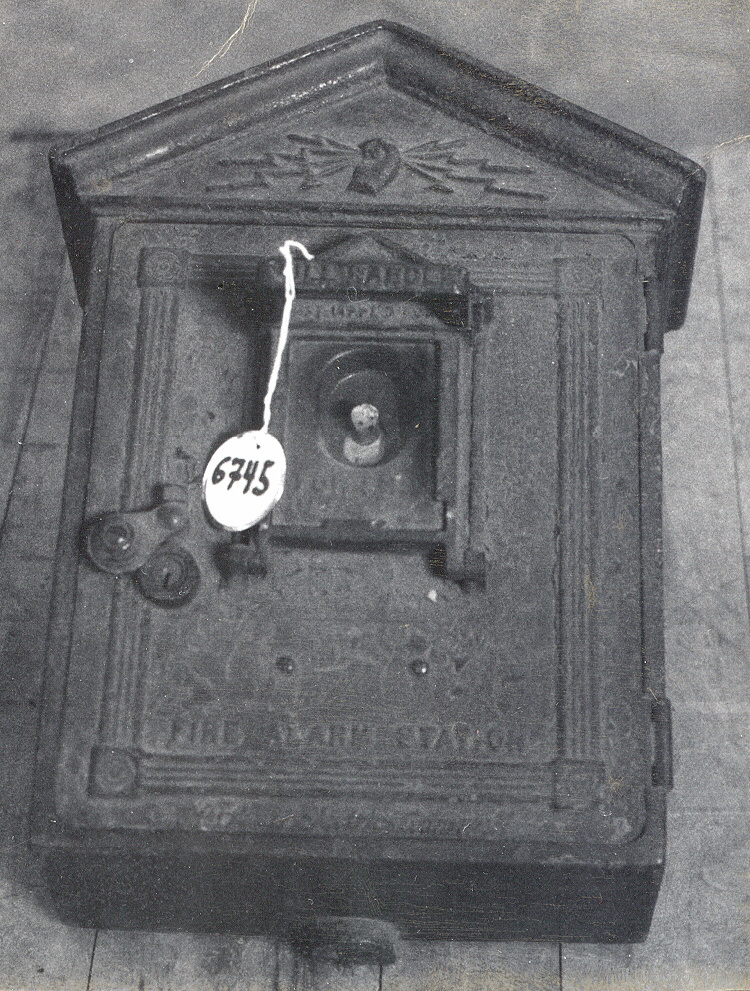Box, alarm
Use this image
Can I reuse this image without permission? Yes
Object images on the Ingenium Collection’s portal have the following Creative Commons license:
Copyright Ingenium / CC BY-NC-ND (Attribution-NonCommercial 4.0 International (CC BY-NC 4.0)
ATTRIBUTE THIS IMAGE
Ingenium,
1967.0045.001
Permalink:
Ingenium is releasing this image under the Creative Commons licensing framework, and encourages downloading and reuse for non-commercial purposes. Please acknowledge Ingenium and cite the artifact number.
DOWNLOAD IMAGEPURCHASE THIS IMAGE
This image is free for non-commercial use.
For commercial use, please consult our Reproduction Fees and contact us to purchase the image.
- OBJECT TYPE
- Electric/Exterior
- DATE
- 1925
- ARTIFACT NUMBER
- 1967.0045.001
- MANUFACTURER
- Northern Electric
- MODEL
- Gamewell
- LOCATION
- United States of America
More Information
General Information
- Serial #
- N/A
- Part Number
- 1
- Total Parts
- 1
- AKA
- N/A
- Patents
- N/A
- General Description
- Metal body and glass panel below handle.
Dimensions
Note: These reflect the general size for storage and are not necessarily representative of the object's true dimensions.
- Length
- 42.9 cm
- Width
- 27.1 cm
- Height
- 13.0 cm
- Thickness
- N/A
- Weight
- N/A
- Diameter
- N/A
- Volume
- N/A
Lexicon
- Group
- Fire Fighting
- Category
- Alarms
- Sub-Category
- N/A
Manufacturer
- AKA
- Northern Electric
- Country
- United States of America
- State/Province
- Unknown
- City
- Unknown
Context
- Country
- Unknown
- State/Province
- Unknown
- Period
- Unknown
- Canada
-
Type of device made and used in Canada to alert fire fighters in a fire department, of the presence of a fire in the neighbourhood where the alarm box is situated. - Function
-
To rapidly transmit an alarm of fire to a fire fighting force. - Technical
-
The first practical fire alarm system was developed in Boston in1852, by Dr. William Channing and Moses Farmer. It worked on the principal of telegraphy: a signal was sent long distances over wires, by electric transmission. "In the first boxes, a notched code wheel was turned by a crank handle in the front of the box. Then, it evolved with a spring-driven, clockwork-type mechanism which drove the code wheel when activated by a lever." Boxes were put on a pedestal or telephone pole at a street corner. Early boxes were locked with keys which were given to the citizens and policemen who had the responsibility of pulling the lever in the event of a fire. In 1875 a model was made that did not need a key. In 1922, the quick-action door was put on the market. There are two main components that make up this kind of fire alarm system: the telegraph mechanism, located on a street corner, and the alarm apparatus (gongs and indicators), located inside a fire department's Headquarters. One-way communication between the telegraph and alarm system was made possible by linking both boxes with aerial and/or ground-level wires. Central station equipment would receive the signal, revealing the location of the fire, and would proceed to notify the firehouse nearest to the fire by transmitting another signal to their alarm box. - Area Notes
-
Unknown
Details
- Markings
- Mfr. logo (raised): "[image of clenched fist and lightning bolts]" - Instructions on handle (in raised lettering): "TO OPEN/ PAT. APPL'D FOR/ PULL HANDLE" - Instructions below lever (in raised lettering): "FOR FIRE/ PULL LEVER" - Mfr. insignia (raised): "Northern Electric - Gamewell" - Markings on reverse of exterior box door: "MADE IN USA" - Markings on interior box door: "PULL/ LEVER/ DOWN ONCE/ LET GO"
- Missing
- Key to open interior box door.
- Finish
- Painted red.
- Decoration
- Raised relief and lettering on front door and upper pediment.
CITE THIS OBJECT
If you choose to share our information about this collection object, please cite:
Northern Electric, Box, alarm, circa 1925, Artifact no. 1967.0045, Ingenium – Canada’s Museums of Science and Innovation, http://collection.ingenium.ca/en/id/1967.0045.001/
FEEDBACK
Submit a question or comment about this artifact.
More Like This
